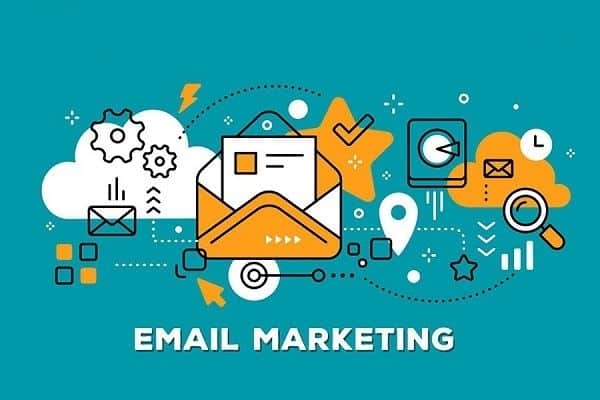3 Advanced Building Materials Marketing Strategies that Companies are Overlooking
Marketing strategies for the construction materials industry is a puzzle that requires considerable time to find a solution. Conveying messages through traditional methods and word-of-mouth (WOM) can’t be compared to the following marketing trends in today’s digital age.
How do you distinguish your products from those of your competitors? How do you build bonds with dealers and contractors that keep them coming back to you, every time? Without the answers, it’s easy to lose market share to other brands. That results in a shrinking customer presence, and ultimately, dwindling revenues.
The knowledge is here at your fingertips, and implementing it can keep your brand on top.
Here are 3 working strategies for building product marketing that will give you an edge in lead generation and sales!
1. Video Marketing that Gets Attention
Video is one of the most impactful tools of modern marketing. In a report by Wyzowl, 87% of video marketers noted that video gave them a good ROI.
It works very well in marketing for building materials, for several reasons:
- Video can show your products in action, making features and benefits real to consumers.
- Video lets you demonstrate expertise and take prospects on a journey of empowerment and trust.
- Video blasts through the noise online, grabbing the attention of busy prospects who ignore less-engaging content types.
Great video formats for building material marketing include short product demos, detailed tutorials, explainer videos emphasizing unique product benefits, and testimonials from happy consumers.

How should the videos be promoted?
First off, they should be prominently embedded on your website and shared on YouTube with SEO tags and keywords, so that organic searchers easily land on them.
Videos should also be shared via social media communities on LinkedIn, Facebook, and wherever else your customers actively gather.
You can take it a step further and use paid advertising on social media and dedicated outlets for contractors, dealers, architects, and other buyers to build your video audience.
David Siciliano, the Founder and Creative director of Savvy Studios has useful insights on the importance of Video content:
“Video is an incredibly effective way to deliver a strong message about a product or service. Viewers retain 95% of a message when they watch it in a video compared to 10% when reading it in text (insivia). Additionally, there is a more personal relationship built between the Brand and the customer. You can use a video editor online to create videos that teach your customers how to use your product or service, help you weigh in as Thought Leaders in your industry, share customer success stories and case studies, promote and share strategic partners and their products… the list goes on and on.
Above all else, data shows that video content plays a crucial role in customer purchases. 84% of people say that they’ve been convinced to buy a product or service by watching a brand’s video. 96% of people have watched an explainer video to learn more about a product or service. Consumers who end up on an e-commerce site through a user-generated video are 184% more likely to purchase, and spend 45% more. Video content continues to be where the leading edge of digital marketing lives.”
2. Email Marketing
Various tests and studies on email marketing have shown that this tool can influence consumer behavior, even persuading them to visit websites for more information or to make purchases.
Despite having been around for quite some time, email marketing is far from becoming outdated and is emerging as a marketing trend in 2022. Customers are accustomed to receiving and sending emails. According to research, 60% of consumers state that email is their preferred channel for receiving promotions and updates from businesses.
Email also proves highly effective in attracting customers: it’s 40 times more effective than Twitter and Facebook combined.

But how to make effective email marketing?
Develop a specific campaign plan
First and foremost, you should plan your campaign. Identify your target audience and segment that audience. This way, you can tailor your message to the needs of each segment and utilize various personalization tools.
Segmentation will help increase click-through rates as you make your emails more relevant. Additionally, you should also define what the email content will include. Set specific goals for the campaign, consider different marketing content, and then establish an efficient email sending schedule.
Design appropriate emails
Build a strong core message and persuasive CTAs (Call to Actions). Ensure the email design is simple and clean so recipients can focus on the CTAs and core message. Also, start the email with the most important information so people can quickly understand your email’s content.
Test the email
Firstly, ensure your email displays correctly on all device types, regardless of which email service provider your subscribers use. Secondly, you should use A/B testing to determine the most effective content and design, ensuring you’ll get the best results from your campaign.
Measure email performance
There are various types of software that allow you to measure the success of your emails. Additionally, you can refer to some marketing and sales programs like HubSpot, Salesforce, and SendX which also have email tracking tools. The key metrics you should track are click-through rates, open rates, and the website traffic you receive from your emails.”
3. A 3-Step Epic Content Formula that Dramatically Increases Your Blog Traffic
Content should be a staple of any building products marketing strategy. A 2021 survey by Demand Gen Report reveals 62% of B2B buyers rely on content to make purchasing decisions. Content that stands the test of time and lifts sales must be strategically deployed.
Here’s a 3-step formula for “epic” content, created by Matt Lee of Lead Generation Experts that his team uses to dramatically increase organic search traffic for building material manufacturers.
Step #1: Pick high-traffic SEO keywords
According to BrightEdge, 53% of all trackable website traffic results from organic search. SEO should be a priority in building products marketing!
Start by brainstorming relevant keywords and phrases and looking up their traffic volume. Good keyword research tools include the SEMRush Keyword Magic Tool and the Keyword Planner inside the Google Ads platform.
Next, build out lists of high-traffic SEO keywords for the 3 main sales funnel stages: Awareness, Research, and Action. Use your keywords as the foundation for content pieces that speak to customers in each stage.
For example, customers in the awareness stage might simply search for “flooring materials,” those doing research often look for reviews or product comparisons, and those ready to buy might search for “where to buy flooring materials in [city].”
Step #2: Choose your specific content type
You can produce content in many formats, including:
- List posts
- Detailed How-to guides
- “Ego bait” content that highlights prospective partners
- Infographics
- Online interactive tools
To be truly epic, each piece should combine good SEO and “attraction” elements like useful tips, tricks and insights. The goal: content that’s both keyword-rich and offers high value to readers.
Want to make your building material marketing assets even more special and share-worthy? Add content upgrades such as an exclusive demo, a free PDF guide, or a link to your email newsletter to each piece. Make sure to notify potential prospects by sending bulk SMS messages or emails so that they know what’s going on.
Step #3: Promote your content and capture leads
Finally, target your content distribution so it reaches the right eyeballs. Some of the best strategies are:
- Link-building and outreach via guest blogging, putting out press releases, and sharing content with industry email newsletter publishers.
- Social promotion through active organic posts and communities on social media channels like Facebook and LinkedIn, as well as specialized industry forums. Keep engagement high by responding quickly to posts and inquiries.
- Paid advertising on social media sites, Google, and other outlets. For lower lead costs, take advantage of ad retargeting opportunities that let you follow up on people who have begun to show interest.
Before promoting your content, place lead capture mechanisms on your landing pages. There’s where visitors enter their name and email address to receive more helpful info from you over the coming days and weeks. Your follow-up will be crucial for moving leads towards a productive sales conversation.
Exclusive Strategy for Building Materials Marketing
For companies that make building products, marketing is often an afterthought. Manufacturers tend to lean on old outreach methods that worked long ago. Standing out today requires a more strategic approach around the many digital tools at your disposal.
By leveraging video, a lead-generating dealer locator software, and epic content, you’ll finally demystify marketing for building materials. You will put your brand far ahead of competitors who are stuck in the past, and you’ll tap into fresh new pools of customers and partners who are ready to buy now.
Source: https://www.bullseyelocations.com/blog/building-material-marketing
Metta Marketing
Leading Brand Strategy Consultant










